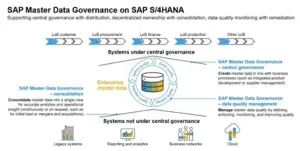What is Information Security?
In the digital age, the term ‘Information Security’ has become ubiquitous, echoing throughout the boardrooms of multinational corporations and small businesses alike. As the world becomes more interconnected, our dependence on technology is escalating, making integrity, confidentiality, and availability of information paramount. Yet, for those unfamiliar with the terminology, you might ask, “What exactly is Information Security? And why should I be concerned?”
Information Security is defending information from unauthorized access, disclosure, disruption, modification, inspection, recording, or destruction. In a world where data breaches are, unfortunately, a typical headline, Information Security stands as a formidable line of defense, shielding our digital assets from potential threats.
However, Information Security is not a one-man job. It requires an amalgamation of sophisticated technology, detailed protocols, and, most importantly, well-trained professionals. At the helm of this digital fortress stands the Information Security Officer – a role that has become increasingly crucial as our reliance on digital data deepens.
Understanding The Basics of Information Security-
‘Information Security’ might sound intimidating, but it’s simpler to understand than you might think. At its core, Information Security, often abbreviated as InfoSec, focuses on safeguarding data from unwarranted intrusions and threats. This protection extends to data in various forms – be it digital on our computers and servers or physical on paper.
Three fundamental principles underpin Information Security: confidentiality, integrity, and availability, often called the CIA triad.
1. Confidentiality:
It involves restricting access to information to authorized individuals only. Measures to ensure confidentiality include data encryption, two-factor authentication, and secure passwords.
2. Integrity:
It ensures the data is accurate and unchanged from its original state. It prevents unauthorized users from modifying data, whether it’s in transit or at rest. Data backups and Checksums are typical examples of ensuring integrity.
3. Availability:
It ensures that data is readily available when needed by authorized individuals. Redundant data storage, maintaining hardware, updating software, and having a reliable power supply confirm availability.
But where does Information Security intersect with Cyber Security?
The two terms are often used interchangeably, but there’s a subtle difference. While Information Security is a broader term encompassing the security of all information, regardless of its form, Cyber Security is a subset of Information Security. It focuses on protecting electronic data from cyber threats, such as hacking, phishing, and malware.
Having understood the basics of Information Security, let’s delve deeper into one of the most crucial roles in this domain: an Information Security Officer.
Roles & Responsibilities of an Information Security Officer-
In the vast ocean of Information Security, a role is vital to the functioning of any modern business, which is the Information Security Officer. An Information Security Officer is a high-level professional responsible for creating and implementing a complete information security strategy that meets the organization’s business objectives and addresses its security needs.
So, what does a day in the life of an Information Security Officer look like? Let’s break down their key roles and responsibilities:
1. Developing and Implementing an Information Security Plan:
The Information Security Officer creates a detailed plan to safeguard the company’s data and infrastructure from threats. It involves analyzing the organization’s security architecture, conducting security audits, and recommending improvements.
2. Policy and Compliance:
They develop and update the company’s security policies, protocols, and procedures. Additionally, they ensure the company complies with all relevant data protection and privacy regulations.
3. Security Awareness Training:
An integral part of their role is to conduct regular training sessions for employees. It ensures that everyone in the firm understands their responsibilities in maintaining information security.
4. Incident Response Planning:
They prepare the organization for potential security incidents, which include developing an Incident Response Plan (IRP) detailing how the company will respond to and recover from security breaches.
5. Staying Updated on the Latest Security Threats and Trends:
Information Security Officers must continually update their knowledge amid the rapid evolution of cyber threats. Cyber Security Courses play a critical role here, providing valuable insights and training on the latest threat vectors and mitigation strategies.
The role of an Information Security Officer is dynamic and multifaceted. Amid the advancement of technology and an ever-growing threat landscape, this role has evolved significantly over time. It has moved beyond just securing systems and now involves the following:
- A strategic approach to managing risk
- Ensuring compliance
- Fostering a culture of security within the corporation
Given these diverse responsibilities, it’s clear that an Information Security Officer plays a pivotal role in navigating the challenging waters of Information Security.
Case Study: A Day In The Life Of An Information Security Officer-
Imagine Sarah, an Information Security Officer at a renowned multinational corporation. Through a snapshot of her typical day, we can gain a deeper understanding of the roles and responsibilities of an Information Security Officer.
Sarah’s day starts with a review of the overnight security reports, which include scanning for any new cyber threats or incidents that occurred while the world was asleep. As an Information Security Officer, it’s crucial for her to stay ahead of the curve, and understanding the latest threats is the first step towards that.
Next, she meets with her team to discuss these threats and any vulnerabilities discovered. They strategize ways to fortify the organization’s defenses, from updating firewalls and software to patching potential security loopholes.
Post this, Sarah spends her time reviewing the company’s compliance with various data protection and privacy regulations. She liaises with the legal department to ensure all processes align with the latest regulations.
In the afternoon, Sarah conducts a training session for the employees, emphasizing the significance of secure passwords and recognizing phishing emails. She believes every employee, irrespective of their role, is vital to the organization’s security infrastructure. By taking a Cyber Security Course, she has gained the skills to communicate these complex concepts to non-technical team members.
Toward the end of the day, Sarah reviews the progress of her ongoing projects. These range from implementing a new security protocol to planning an upcoming penetration testing exercise.
Finally, Sarah ends her day by attending a webinar on the latest cyber security trends. She is a lifelong learner, and staying updated is a non-negotiable aspect of her role as an Information Security Officer. She knows that the cyber security course she completed gave her a solid foundation, but the learning continues beyond there.
This day in the life of Sarah, she illustrates the dynamic nature of the role. It requires technical knowledge, strategic planning, excellent communication skills, and an unyielding commitment to learning. Each day brings new challenges, but with the knowledge gained from comprehensive cyber security courses and hands-on experience, an Information Security Officer like Sarah stands ready to protect the organization’s valuable information.
Conclusion-
The world of Information Security is an ever-evolving landscape filled with both challenges and opportunities. As our reliance on digital data grows, so does the significance of protecting it. Information Security stands as a digital guardian, its importance resonating across industries and businesses of all sizes.
At the heart of this defense mechanism is the Information Security Officer. They serve as the organization’s guiding light, navigating the complexities of data protection and compliance while fostering a security awareness culture. Their role, while demanding, is instrumental in safeguarding an organization’s information assets.
On this journey, continual learning and adaptation are essential. As highlighted through Sarah’s day, staying up-to-date with the latest threats and mitigation strategies is non-negotiable in this role. As we move towards an increasingly digital future, the realm of Information Security is set to grow and evolve, making the role of an Information Security Officer more critical than ever.
Author Bio-
Kanchanapally Swapnil Raju is a Technical Content Strategist at Great Learning who plans and constantly writes on cutting-edge technologies like Data Science, Artificial Intelligence, Software Engineering, and Cloud Computing. He has in-hand skills in MEAN Stack development and programming languages such as C, C++, and Java. He is a perpetual learner and has a hunger to explore new technologies, enhance writing skills, and guide others.



